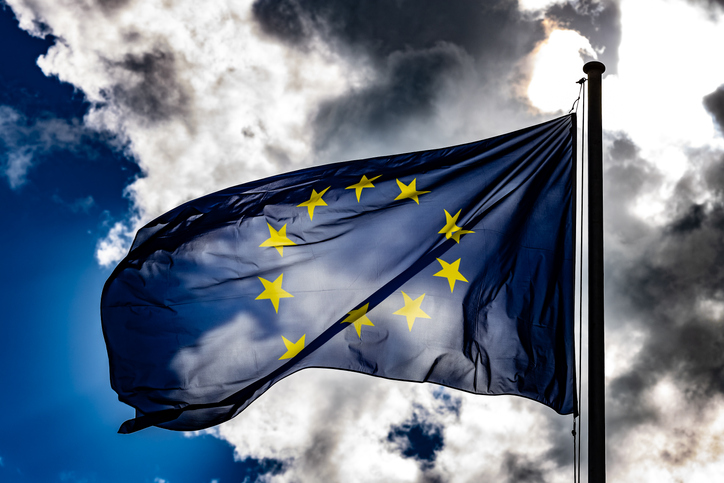The European Union and the United States have the largest bilateral trade and investment relationship and enjoy the most integrated economic relationship in the world, notes the European Commission. This transatlantic partnership is a key artery of the world economy. Even now, America remains the EU’s number-one trading partner in services. Total US investment in the EU is four times higher than in the Asia-Pacific region, according to the commission.

Meanwhile, EU foreign direct investment in America is around ten times the amount of EU investment in India and China. Europe — a large, wealthy, tech-savvy, mature market of more than 700 million consumers — is a natural first step when companies decide to grow internationally. Just recently, Analog Devices Inc. said it will invest $693.5 million in a new research and development and manufacturing plant in Ireland to boost its European production capacity. Why?
Velocity Global, a US-based worldwide workforce services company, identified the top-five countries for global expansion in a recent report. Two of the top five were European nations: Ireland and Denmark. Driving the selection were critical issues like the availability of skilled workers, regulatory landscape, connectivity and infrastructure quality.
Given the popularity among US companies for overseas offices in Europe, the key guiding factor is how to launch such an office best. Every year, IDA Ireland partners with hundreds of US companies to help them expand overseas. Over the course of these expansions, we’ve gained extensive insight into what works — and what doesn’t. So, what’s the best way to open an initial European office?
- Keep it simple but move quickly. In the early stages, speed to market is key. We’re seeing smaller landing teams and companies going with a lean startup model and then scaling at speed. You can also outsource many of the non‑essential functions in the early stages. Related to keeping things simple is avoiding locations with too much red tape. Focus on getting the business running. Companies that started small and have grown over the years include enterprise application vendor Workday — which started with 100 employees in Ireland and has grown to over 1,500 — and leading job site provider Indeed. Seattle-based Slalom is a recent example of a company looking to expand its European customer base. Starting off with 50 hires, it has plans to hire hundreds in the next few years. These are just a few of the US companies that have built up their European operations located in Ireland.
- Keep it tight. You don’t need offices everywhere. The more you can do from one well-chosen EU hub, the better. Pick a location where you can find international languages and scale teams quickly but also make sure there are peers on the ground. For example, many American companies that are locating in Europe for their EMEA headquarters use multiple languages and employee fluency is common.
- Read the fine print. Compliance is really important in international markets. Before going in, seek out resources that are versed in issues like European labor law, regulations, canceling contracts and other important elements. These issues can vary widely across the EU and the results can be costly if you’re unaware of the possible liabilities. GDPR a regulation on data protection and privacy came into effect in the EU first but quickly spread to other jurisdictions.
- Don’t underestimate the soft factors. Considerations such as quality of the workforce, creativity and the ease of doing business are factors that can’t be quantified on an Excel sheet during your RFI or due diligence but they play a role in a project’s success or failure. Cultural differences, too, really matter. Hiring native speakers directly connects the company to local market knowledge and an understanding of what each market offers. For example, at HubSpot’s operation in Dublin, 35% of employees are international and speak 30 different languages.
- Partner with the right people. Don’t try to do it alone. One of the biggest failures we see is when companies try to take on too much from the US. It’s essential to choose reputable partners. We are seeing a lot of outsourcers, advisors, PEO firms and other companies popping up in the US — and not all of them are 100% familiar with all the European jurisdictions that you might want to work in. HubSpot brought the first 10 Irish-based hires to Cambridge, Massachusetts, for a month to get them steeped in HubSpot’s culture and mission. That team returned with a half-dozen longer-time HubSpotters, striking a balance between new and seasoned employees.
There’s never an easy time to expand a business internationally, but if companies want to prosper and grow, going global is the necessary next step. The benefits are there if companies properly navigate international markets and there is plenty of assistance available along the way. With the right support, companies can manage their expansions successfully.
Gavin O’Loughlin is VP Technology, Pacific Northwest for IDA Ireland. In this role, he assists businesses looking at Ireland as the next step in their international growth strategy, and also works with companies that already have successful operations in Ireland. O’Loughlin started his career in the pharmaceutical industry and has since worked in various sectors within IDA, both in Ireland and the US. Today, he is based in Seattle working with startups, consumer facing companies and large enterprise technology companies. O’Loughlin’s formal qualifications are in pharmacology and business. Contact him at [email protected]
Opinions expressed by SmartBrief contributors are their own.
____________________________________
Take advantage of SmartBrief’s FREE email newsletters on leadership and business transformation, among the company’s more than 250 industry-focused newsletters.
